Chi Lang Pass
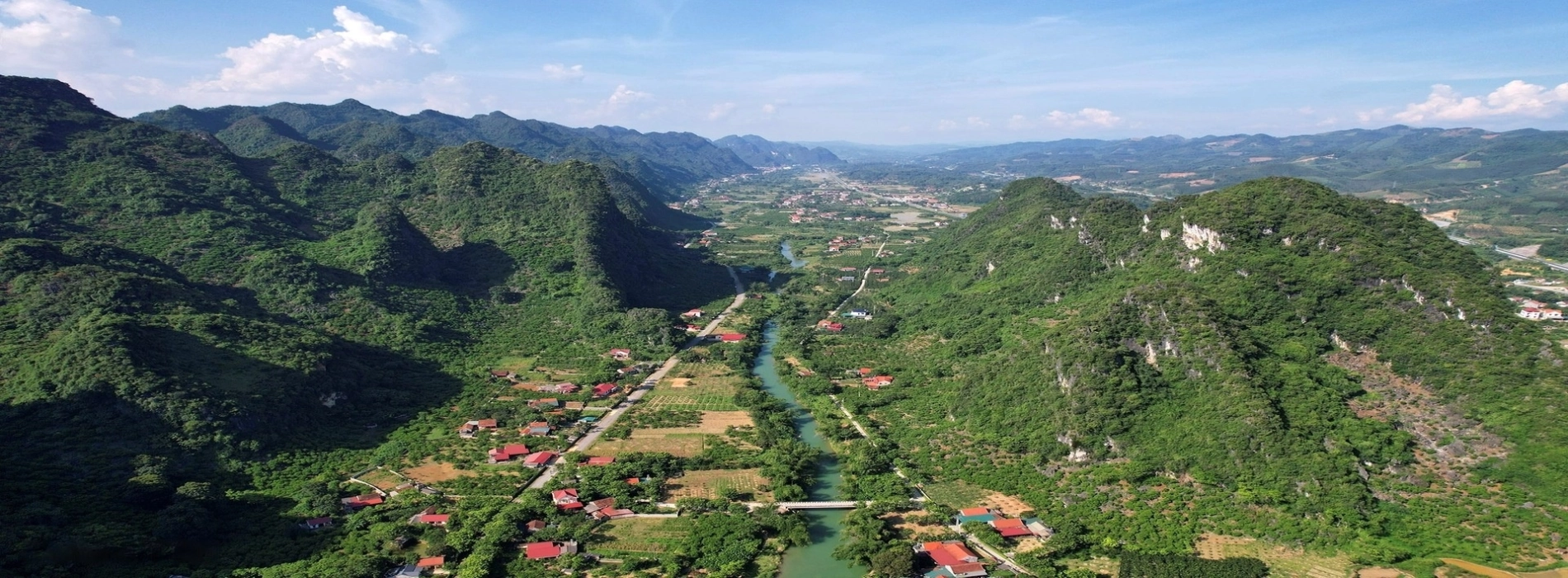
Chi Lang Pass is a narrow oval-shaped valley. Surrounded by high mountains on all sides, Thuong River flows through the valley. The pass length is nearly 20 kilometers and the widest point is about 3 kilometers. It is the trade route throat from Vietnam to China.
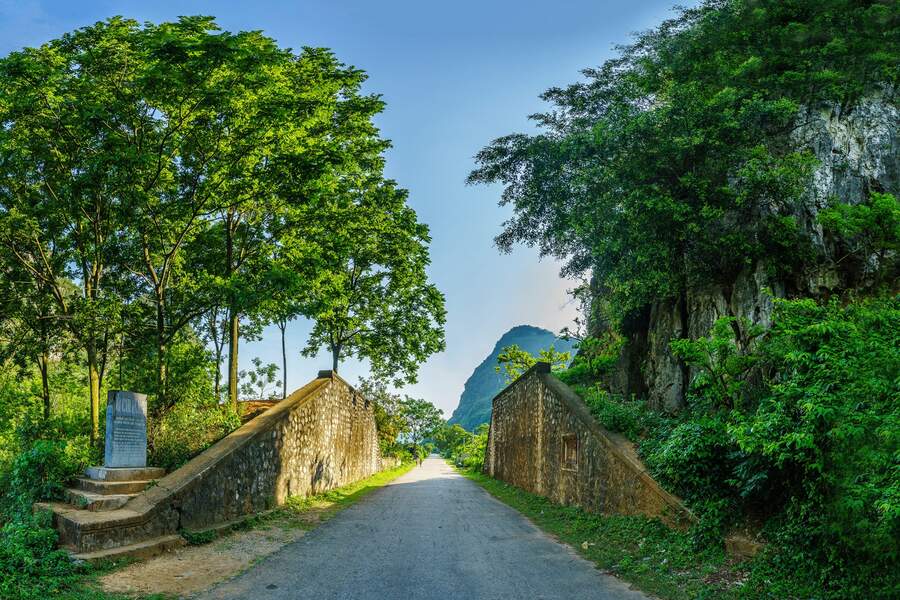
The path leading to Chi Lang Pass
Because of strategic location and imposing scale, Chi Lang Pass has long been a natural fortress guarding the nation against Northern invaders. Visitors to Chi Lang Pass can explore the "largest outdoor history museum" with 52 historical sites. This destination has been designated a Special National Monument and attracts numerous tourists.
Let’s discover Chi Lang Pass’s majestic landscapes and epic history with Asia King Travel.
Chi Lang Pass is located in Chi Lang District, Lang Son Province, between Lang Son City and Hanoi. It is about 50 kilometers from Lang Son City and 110 kilometers from Hanoi.
The pass has two entrances: the northern gate is "Quy Mon Quan" (Demon Gate), and the southern gate is "Ngo The" (Oath Pass). These names reflect the Vietnamese people's determination to defend their country while instilling fear in their enemies.
Suggested for you: Bac Son Bounty: 2-Day Discovery
Unlike in the past, the journey from Hanoi to Chi Lang Pass is now much easier. From the third ring road, cross Thanh Tri Bridge and enter National Highway 1A. Then, follow Highway 1A in the Hanoi - Lang Son direction to reach Chi Lang Pass. If possible, travel by personal vehicle to enjoy the scenery on the way.
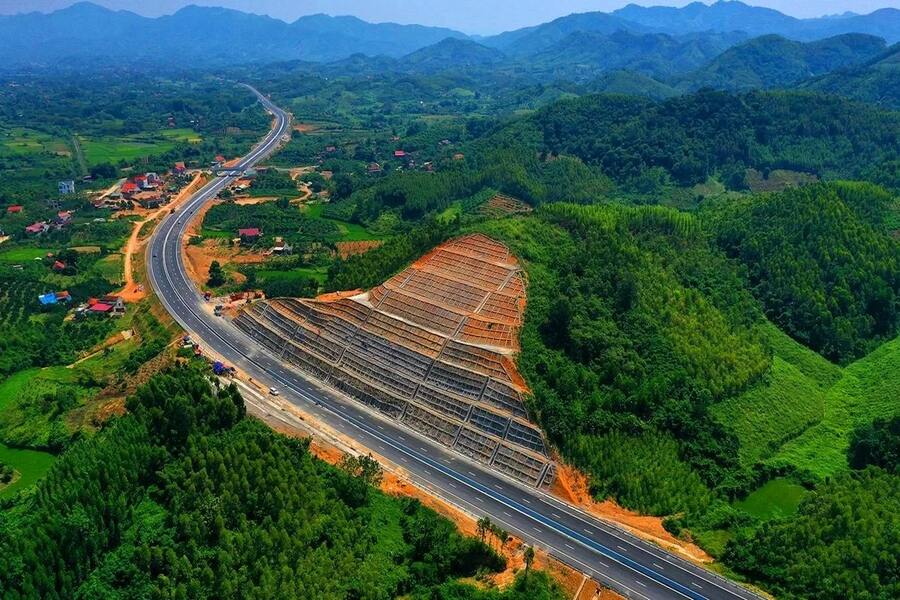
National highways make the journey to Lang Son mountainous region more convenient.
Throughout the history of northern invasions, Chi Lang Pass has always been the main route of attack. Because crossing Chi Lang Pass allows for rapid advancement into the plains and towards Hanoi. However, passing through Chi Lang Pass is far from easy. As the saying goes, “Ten men go, only one returns”.
Le Hoan established the Early Le Dynasty. Using this as a pretext, the Song Dynasty invaded Vietnam. In 981, Le Hoan toured the border region to devise strategies for the Song invasion. Upon arriving at Chi Lang, the king paused, paying particular attention to the terrain. He chose this location as the decisive battleground against the Song army.
In a battle where Kinh, Tay, and Nung warriors utilized stone traps, spears, and poison-tipped arrows, the enemy general Hou Renbao and tens of thousands of soldiers were killed in action. This halted the first Song invasion and preserved the young independence of the country.
In 1076, Grand Commandant Ly Thuong Kiet set up an ambush using cliffs, bushes, riverbanks, and streams to create a Bagua formation. Only in a single battle, the enemy must retreat. The famous main general Guo Kui and deputy general Zhao Xie fled back to their country yet not believing they were still alive.
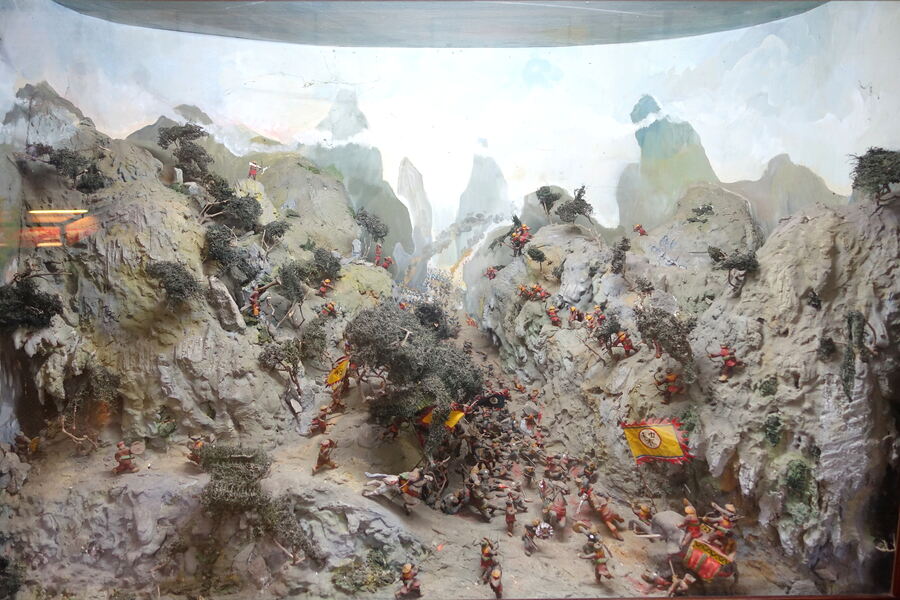
The painting depicts the ambush at Chi Lang Pass
In 1285, the mighty Yuan army invaded for the second time, aiming to devour the small nation. Commander Tran Hung Dao arrived at Chi Lang Pass and assessed the situation. Recognizing the enemy’s greatest strength at Calvary, he devised a cunning strategy. He ordered digging countless horse traps in Chi Lang.
At the Chi Lang Pass, the Yuan army was ambushed repeatedly. Horse traps brought down the mighty cavalry that had once galloped across Eurasia. Prince Toghan was forced to flee in a copper pipe, abandoning tens of thousands of his soldiers to perish in the treacherous terrain.
Chi Lang Pass achieved its most glorious victory in Vietnamese history in the Chi Lang-Xuong Giang battle in 1427. A main Ming army of nearly 100,000 soldiers led by Liu Sheng, invaded to suppress the Lam Son Uprising led by Le Loi (King Le Thai To).
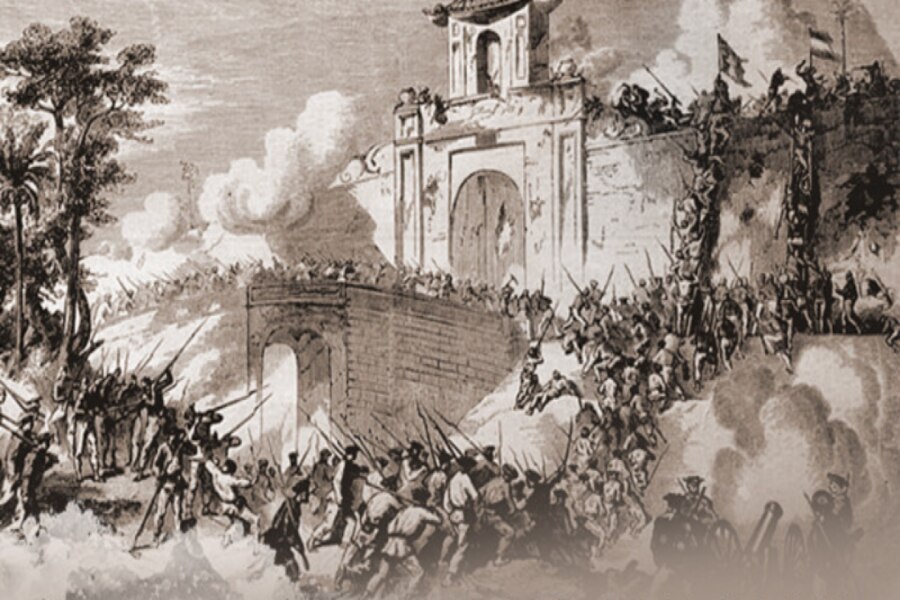
Le Loi's army attacked Xuong Giang Citadel, successfully concluding the uprising
Le Loi’s army feigned defeat to lure the enemy into the Chi Lang Pass. The Ming army was overjoyed to see the enemy seemingly fleeing. Liu Sheng led his troops in hot pursuit. Reaching the ambush site, Le Loi's army sprung the trap attacking from all sides. The Ming army suffered a major defeat. Liu Sheng was killed at Ma Yen Mountain along with over 10,000 of his soldiers.
Furthermore, Chi Lang Pass also contributed to the victory against the Qing army in the 18th century. It even triumphed over modern enemies like the French and Japanese in the 19th and 20th centuries.
This area is named “Demon Gate" or "Demon Face Mountain" due to the unique rock formations resembling a grotesque human face. The image of a demon devouring invaders makes a powerful warning to enemies. However, locals don't see it as a symbol of evil but as a guardian spirit protecting their village and way of life.
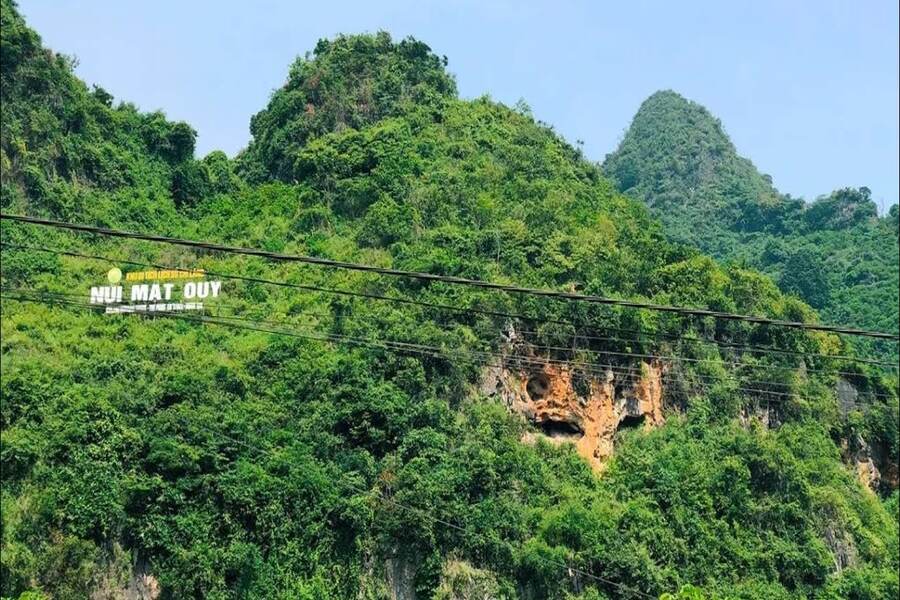
The human-like face on the mountain gazes out Chi Lang Pass
Ma Yen Mountain looks like a horse with a saddle on back. Tay and Nung people formed an army and trained war horses here to resist northern invaders. The most glorious feat was the death of the Ming general Liu Sheng at this very location.

Ma Yen Mountain Monument Stone
Chi Lang Victory Museum was built in 2002. The exhibits recreate the history of resistance wars against foreign invaders in Chi Lang, culminating in Chi Lang-Xuong Giang Battle. The monument complex and museum are a meaningful landmark attracting a growing number of visitors from near and far.

Chi Lang soldiers and civilians statue in front of the museum
Chi Lang is one of Vietnam's glorious landmarks, a source of immense national pride for defending the country's tradition. Contact us now to visit the heroic land. Don’t worry, you shall pass Chi Lang!
Suggested for you: Vietnam Excursions